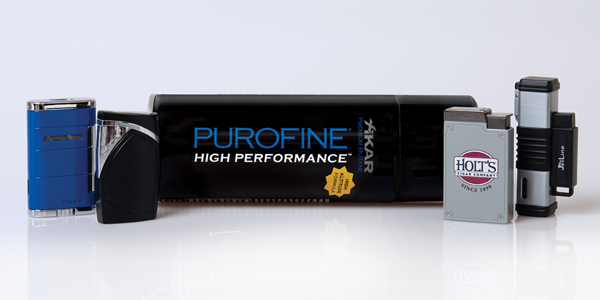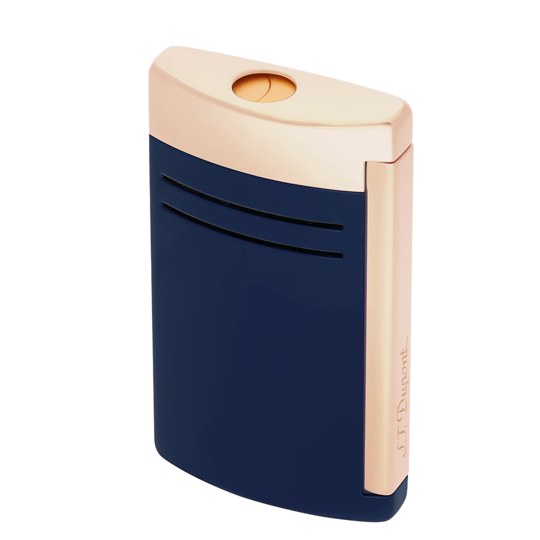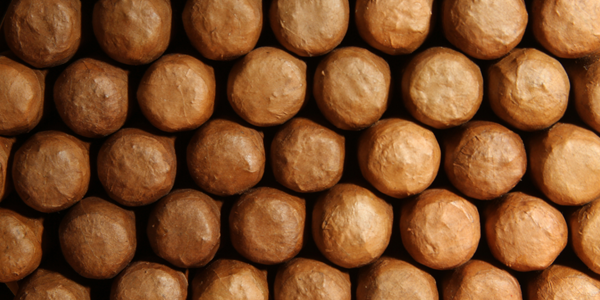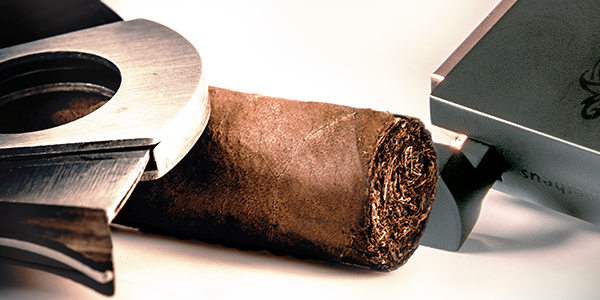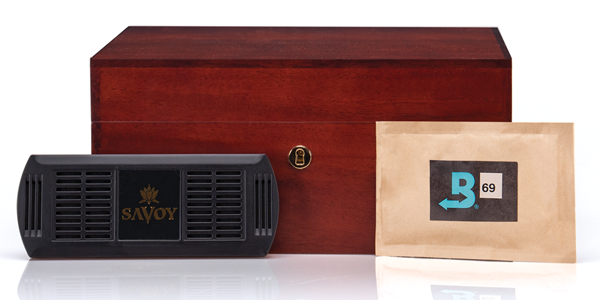How to Refill A Lighter
Flick… flick. Flick, flick, flick. There’s nothing like the sound of an empty lighter to send your pals fleeing when they’re on the hunt to bum a light. One of the most common butane lighter problems is an empty gas tank, and that’s an easy fix. Unless you’re using a disposable lighter, you simply have to refill your lighter with butane or liquid fuel, depending on what kind of lighter you use.
In most cases, cigar lovers prefer butane lighters. Butane lighters are manufactured in both soft-flame (a standard Bic-style flame) and torch models. Most Bic lighters are disposable, but many brands, including Xikar, Colibri, and ST Dupont, manufacture both soft-flame and torch-style butane lighters. Knowing how to refill a butane lighter correctly is an easy but essential step in firing up your next cigar. We’ve outlined the best way to refill a lighter in a few simple steps below. At the end, we’ve also addressed how to refill a Zippo lighter, although most cigar smokers avoid lighters that take a liquid-based fuel.
How Can You Tell If a Lighter is Refillable?
Refillable lighters have a valve at the bottom of the tank designed to receive fuel. Your typical Bic-style or disposable lighter is not refillable. Once the fuel runs out of a disposable lighter, there is no way to replenish the gas tank. When a lighter has a valve at the bottom, you can insert the stem from a can of butane to add fuel to the tank.
How to Refill a Butane Lighter
- Purchase a Can of Quality Butane
Not all butane is created equal. Stick with high-quality butane that is at least triple-refined, or even four or five times refined. Most cheap generic brands available at convenience stores won’t cut it. Why? Unrefined, or less-refined, butane carries a higher-level of impurities. Fuel impurities will clog the jets in your lighter. Using the cleanest-possible fuel ensures your lighter will perform with maximum efficiency and last a long time. Both Xikar and ST Dupont manufacture high-quality, ultra-refined butane.
- Bleed Your Lighter
Bleeding, or purging, your lighter is a critical step. As the butane in your lighter is depleted from everyday use, the fuel tank fills with air. The air that is left at the end of an exhausted fuel tank will prevent more fuel from entering the lighter when you try to refill it. Releasing the air empties out the tank completely and makes room for a fresh, full injection of butane.
To bleed your lighter, you will need either a paper clip or a small, thin screwdriver. Straighten the end of the paperclip, or use the tip of your screwdriver, and press in on the fuel inlet valve at the bottom of your lighter. Hold the valve in until all the pressure is released. It usually takes about 5 to 10 seconds. You will hear a hissing sound as the air and any residual fuel is released from the tank.
After all the air is out, turn the flame adjustment wheel to its lowest setting. The flame adjustment setting is marked by a (+) and (-). Turn the wheel all the way down to the (-). Doing so insures an efficient and optimal refill and limits any trace amounts of excess air from sneaking into the tank.
- Insert the Butane
Hold your lighter upside down. Turn the can of butane upside down as you prepare to refill the lighter. The reason for turning the can upside down is simple. Inside a can of butane are two substances: butane and propellant. Propellant is a lighter weight than butane and, therefore, it rests at the top of the can, closest to the nozzle. By turning the can upside down, the butane is shifted closest to the fuel nozzle as you prepare to insert it into the valve on your lighter.
Push the nozzle into the valve for about 5 or 10 seconds while the lighter fills. The lighter will get cold as a result. If your lighter has a fuel window, you can visually monitor how much butane makes it into the tank. Keep in mind, it’s nearly impossible to completely top off a butane lighter. There will always be a slight pocket or bubble of air in the tank and you will see this in the fuel window.
- For maximum speed and efficiency in refilling your lighter, one trick that always works is to put your lighter in the freezer for about 10 minutes after you bleed it and just before you refill it. Cooling the lighter down to a freezing temperature ensures the butane enters the tank as quickly and thoroughly as possible.
- Play the Waiting Game & Fire Away
Once the tank is full, wait for 3 to 5 minutes before you try to operate the lighter. Doing so allows any excess butane (on the exterior of your lighter) to evaporate and it gives the lighter time to return to room temperature. Readjust your flame height with the (+) and (-) at the bottom to roughly the midpoint. You don’t want to crank it all the way open to the (+) right after a fresh refill because you can trigger an intense burst of flame. Gradually increase the flame to your desired height after you’ve sparked it up a few times. Now it’s time to light your next cigar!
How to Refill a Zippo Lighter
Generally speaking, we don’t recommend Zippo lighters for your cigars, or any lighters that rely on a liquid fuel source. The reason why is simple. Just like when you add lighter accelerant to the charcoals on your grill, the liquid fuel gives off an intense chemical aroma. Although liquid Zippo fuel is more refined than charcoal accelerant, it still gives off a residual chemical taste and aroma that can greatly interfere with your enjoyment of a premium cigar.
Because cigars are thicker (than cigarettes, for example), and because they are handmade from humidified tobaccos, they require a longer toasting or lighting period to fully ignite. As a result, handmade cigars have a greater opportunity to absorb the unwanted chemical aftertaste found in liquid fuel.
However, we also know that many diehard cigar fiends are impossibly attached to their Zippo lighters. In that case, stick with the Zippo brand of liquid fuel. It is the most refined option when it comes to liquid fuel. To refill your Zippo lighter, simply follow a few easy steps:
- Remove the Interior Insert of the Lighter
The entire “guts” of a Zippo lighter simply slide out of the exterior case. You may need a pliers if it’s an old model that hasn’t been refilled in some time, but be gentle. You don’t want to bend the components or damage the metal frame.
- Lift the Felt Lip at the Bottom
On the underside of a Zippo insert is a felt lip (usually white). Under the felt pad is the lighter’s wick. The wick is like a fuse for the lighter fuel to reach the spark that is generated by the flint wheel.
- Fill the Chamber Under the Felt Pad with Fuel
Simply squirt enough fuel into the empty chamber to fill up your Zippo. Once the chamber is full, fold the felt pad back to its original position and wipe any residual liquid fuel from the insert. Be careful. You don’t want excess fuel running onto your clothing or any other surfaces that could easily ignite. It’s best to refill your lighter over the sink or a dish or a hard nonflammable surface. Wait for about 1 minute for any excess fuel to evaporate before returning the insert to the exterior case.
- Return the Insert to the Exterior Case and Spark It Up!
Once the insert is back in place, you should be able to strike the flint wheel and trigger a flame. Again, be very careful at first because any excess liquid gas can easily ignite. Light the lighter in an open area away from any flammable surfaces after a refill.
Refilling Candle Lighters
Most candle lighters are butane. They are often long and narrow with a slender handle. The handle typically doubles as the fuel tank. At the bottom of the handle, you will find the fuel valve. The process for refilling a candle lighter will be the same as for refilling a butane lighter (see above).

